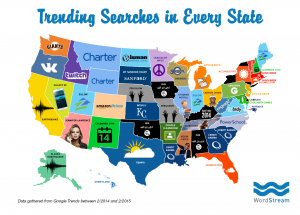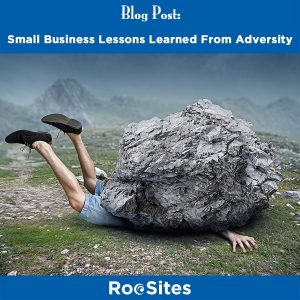Multiple generations in the workplace is nothing new. Today’s multigenerational workforce, however, seems to be something different, complicating business development within professional services firms.
We are all well aware of the generational trifecta: Baby Boomers, Gen-Xers, and Millennials (Gen Y). Each cohort has a unique view of and approach to the workplace, so it makes sense that they engage in business development differently. It helps to understand a bit about each generation.
Baby Boomers are those born between 1946 and 1964. Growing up in a post-war era, they are committed, hard working and responsible. This cohort is responsible for launching many of today’s successful professional services firms. For them, referrals and personal relationships are the only type of marketing. And, until the 1970s, such an approach was truly legitimate.
Gen-Xers, born between 1965 and 1981, represent the smallest generation of the three. Many graduated college without a job. As a result, they enrolled in graduate school and now carry the weight of extensive student loans. Gen-Xers are results-oriented and used to figuring things out for themselves. To endure earlier recessions they have learned how to reinvent themselves or embrace a new career path.
Gen-Xers are also known as the “straddle” generation. They started work offline and were the first to work online. While offline activities (networking events, golf events and conferences) have fueled much of their business development, they have had to learn new engagement platforms—websites, blogs and webinars. In the multigenerational workforce, Gen-Xers are truly bi-lingual. They can communicate both online and offline. (Note: I am a proud Gen-X member.)
Millenials (or Gen Y), were born between 1982 and 2000. With Boomers moving into retirement at an increasing rate, Millenials are now the largest generation in the workplace. The internet and all things online drive their outlook on business and how business can and should be developed. Even face-to-face interactions are online.
While these generational differences may seem trivial, they are shaping how new business is developed.
When it comes to creating value, there are three ways business development is influencing and being influenced today. Consider how the multigenerational workforce contends with each.
1. The war for talent and new business. On the frontline, business developers present the brand and benefits of a firm. But business development extends beyond gaining new business. It also contributes to how we attract and retain talent that can deliver on work sold.
How well business developers project the firm’s culture and brand value can go a long way in getting and keeping the talent needed to build the business. For an organization to bring value to clients and partners, it needs to continually attract good talent. After all, people want to work for winning companies (in professional services, this is no different).
Attracting talent starts with the firm’s brand and its promise. What can your firm offer? How is that offering different from or greater than any other firm courting a prospective employee? If you can’t answer these questions, your firm is probably losing the talent wars. Understanding what is of value to each generation, and being able to communicate that value, will go a long way to attracting and keeping the right people to get the work done.
2. Personal brands and visibility. In professional services, business developers (or the “rainmakers”) are selling expertise—theirs and that of their peers. These rainmakers are essential to the growth of a firm. To be effective, that expertise must be visible to the target audiences. They may attend conferences and other networking events—the offline activities of Boomers and Gen-Xers. But more and more, they must also engage in online activities.
Rainmakers increase their expertise visible online by publishing educational content and becoming known for their proficiency in a market or discipline. By doing so, they are broadening their reach and accelerating their personal brand. These online techniques are changing the face of business development.
In the past, a good business developer could develop a referral network and that network could sustain a career. Today, not so much! Today’s network has a far greater reach. From our referral marketing research, we know that there are three types of referrals:
- Experience-based referrals
- Expertise-based referrals
- Reputation-based referrals
The traditionalist (the Boomer and, to a certain extent, the Gen Xer) relies on experience-based referrals, referrals that came from those who worked with the firm.
Thanks to online searches and the ease of connecting with others outside your immediate circle, the other two types of referrals have skyrocketed. Buyers can now find the expertise they need through their online research and gain a better handle on who the leaders are in a particular field. Referrals are no longer limited to your contact lists, and contact lists are growing.
As the importance of a personal brand has increased, so has the importance of a strong and visible firm brand. A few weeks ago, in my Top 7 Trends for 2016, I mentioned how many of today’s seasoned AEC leaders continue to reject the idea that buyers of professional services search for firms online as part of their short-list efforts. We know that it is through educational content that firms can begin to develop trust, over time increasing their rate of expertise-based referrals and amplifying their reputation.
3. Good training = better selling. Business development is not so much a talent, as it is a skill. It can be learned and must be practiced. As digital technologies thrive and evolve, business development is becoming more sophisticated. As a result, business developers now need to create content, attend events, and speak at conferences and webinars…and more. Today, few folks with professional services experience understand these advanced business development skills. It’s no surprise since business development is not taught in architecture or engineering school.
As pressure increases to teach the skills needed to grow the firms of tomorrow, firms are beginning to recognize that void and are struggling to develop effective business development training. Thankfully, technical organizations are helping with innovations in training. For example, in 2013, the AIA DC Chapter developed a program that helps train and nurture the next generation of leaders. The Christopher Kelley Leadership Development Program dives into a variety of topics, including entrepreneurship and firm management, negotiation skills, rainmaking and marketing. In its third year, this initiative is equipping emerging leaders with the skills they will need to succeed.
The ongoing generational shift is compounded by the bookend issues of succession planning and recruiting within a limited talent pool. In today’s multigenerational workforce, business development is going to take more than a trivial understanding of generational characteristics. For professional services firms, it will require new thinking to grow and keep pace.
Business & Finance Articles on Business 2 Community
(38)








